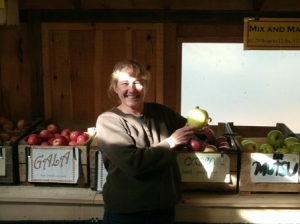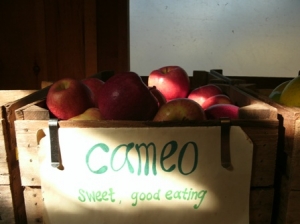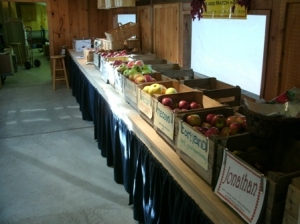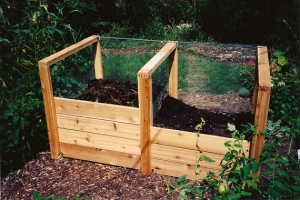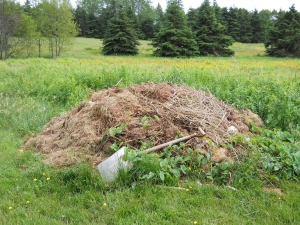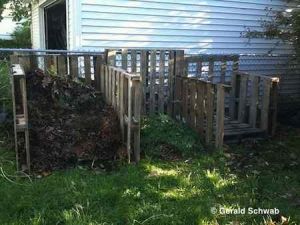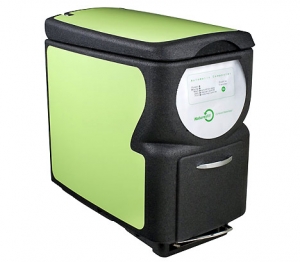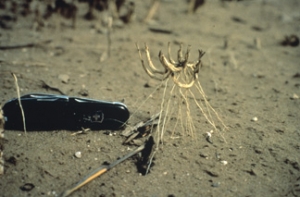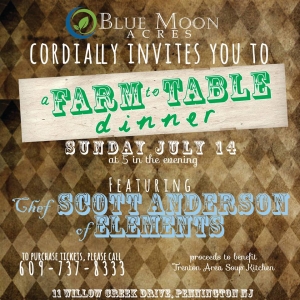How ‘Bout Them Apples!
“An apple a day keeps the doctor away”, the old saying goes.
But what if that apple is local, recently-picked, and grown with love? Could it do more than just keep the doctor away? Could it spark a revolution?
Amy Manoff of Manoff Market Gardens thinks so.
“A well-grown apple is the most basic thing,” she says. “It doesn’t need to be cooked, sauced—it doesn’t need to be anything. It’s easy nutrition. All you have to do is eat it. And if it’s been grown right, it’ll surprise you.”
Nestled amid the rolling farmland of Bucks County’s Solebury Township, Manoff Market Gardens is one of those sleepy rustic stores that call to mind a simpler era, an era before supermarkets, blinking coupon dispensers, and automated checkouts. Fruit stacked in wooden crates, mason jars on modest shelving, hand-written signs, and a yellow lab dozing by the register. The customers all know Amy, and know each other too. It’s the kind of market that makes you want to open your own.
“I have amazing customers who drive all the way out here,” Amy reflects. “I’m not on some major road, so people have to put me on their list; they have to make a point of coming here. It’s pretty special.”
Though MMG is known for their mouthwatering strawberries, raspberries, cherries, blackberries, and over 2 dozen varieties of peaches and nectarines, what really struck me—lover of all things autumnal that I am—was their apples.
As of this writing, they have 11 unique varieties for sale: Northern Spy, Jonathan, Staymen, Cortland, Macoun, SunCrisp, Jonagold, Mutsu, Cameo, Manoff Golden, Fuji, and Gala.
And there are five more soon to come online: Keepsake, Braeburn, Pink Lady, Granny Smith, and Gold Rush.
“And with the Fuji,” Amy says, “we actually have two kinds—early and late, and the late Fuji is a super sweet, very crunchy apple that’ll last all winter. I’ve had late Fujis the following March that were still crunchy and delicious.”
Having gotten by on supermarket-bought apples for most of my life, I was amazed how tasty Manoff’s were. There were all these subtle flavors, all these nuanced notes I’ve never experienced before. The apples were crisp, firm, and intoxicatingly aromatic. It was like biting into a fresh fig for the first time: you never want to go back.
“I would never eat a Granny Smith from a supermarket,” Amy says. “They’re picked before they’re ready, so they end up kind of flat. Ours have an amazing flavor, nice and tart, a go-to apple for chefs. We can let them hang to the right moment and then just bring them into the store.”
Quality isn’t the only reason Amy eschews the supermarket scene; supporting the local economy holds equal sway.
“People understand that when they buy locally, they support the farmer. But the other side of it is that the money’s staying here: the farmer shops locally, hires local people, and so on.”
In the end, though, it all comes back to the apple.
“My favorite eating apple,” Amy reveals, “is the SunCrisp. It looks like a sunset, tastes like a pear; it’s crispy and juicy. For baking, my favorite is the Jonagold. It makes a great pie, it’s neither too sweet nor too tart, it doesn’t disintegrate, and it’s really easy to work with.”
The apple revolution may not be televised, but you can experience it firsthand at Manoff Market Gardens. Join the uprising against bland, generic apples and help keep markets like Amy’s fortified for generations to come.

